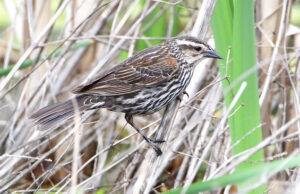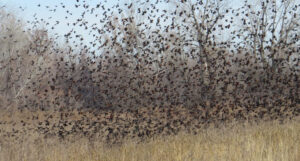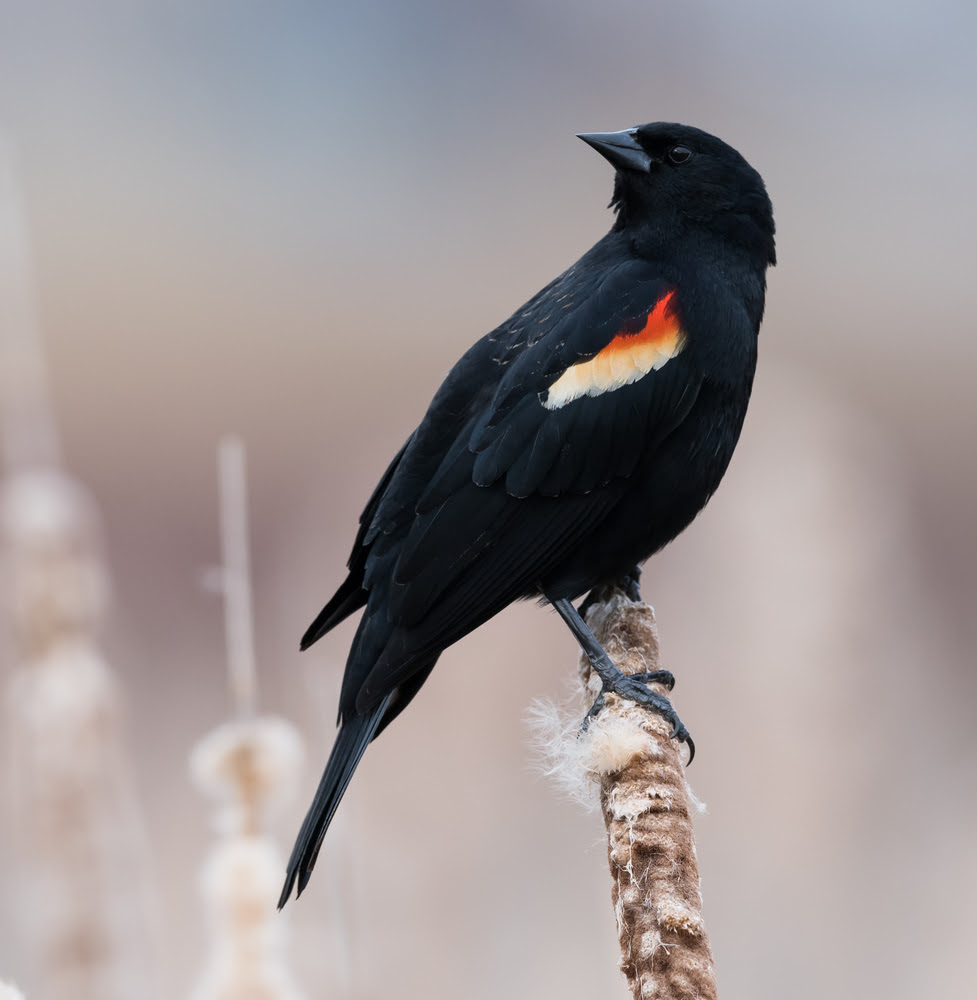Red-winged Blackbird, Agelaius phoeniceus
Bill Rowe
The Red-winged Blackbird is one of the most abundant birds in North America, and springtime gives you a hint of that: every marsh or field of tall grass will have jet-black male Red-wings dotted all around it, each displaying his red shoulders and repeating his brief, loud song to proclaim his territory, while his mate (or one of them; he may have several) builds the nest and incubates the eggs. But you get a better hint of their real numbers in the non-breeding season, as you look out over the fields and see a vague cloud, like a puff of smoke, moving across the distant horizon. Your binoculars resolve this into thousands of dark specks flying together: a winter flock of Red-wings. They may be joined by grackles, cowbirds, or starlings, which are also prone to gather in big flocks, or sometimes by the less common Rusty Blackbird. Trying to estimate the number you’re seeing may be overwhelming, since it is very often in four figures, sometimes five, and occasionally six or even seven (yes, some of their winter roosts may number in the millions). The Red-wing is an “icterid” (member of the family Icteridae, New World blackbirds), and it is “sexually dimorphic” in the extreme—that is, female plumage is totally different from that of males.
IDENTIFICATION: The male is unmistakable with a good look, the only problem being that its red shoulder can be concealed at times, leaving only the narrow pale yellow margin showing on the wing. The female, brown with a complex pattern of body streaks and head stripes, can be a real puzzle at first, as she looks like something from a different family—a big sparrow, perhaps—but no other similarly colored bird has a bill like hers, with its deep base and sharp-pointed tip. Young males in their first fall and winter are streaked and mottled like females but blacker, with variable orange or red on the shoulder.
ST. LOUIS STATUS: Very common and widespread as a nesting bird, spring and summer. In late summer and fall, it gathers into large flocks as described above, and by winter its distribution may be patchy, so that it’s hard to find at some times and places but numerous at others.
Learn more and listen to the calls of Red-winged Blackbirds here.

Female; note the touch of red on the shoulder
Photo Credit: Al Smith

Small part of a large flock
Photo Credit: Bill Rowe




